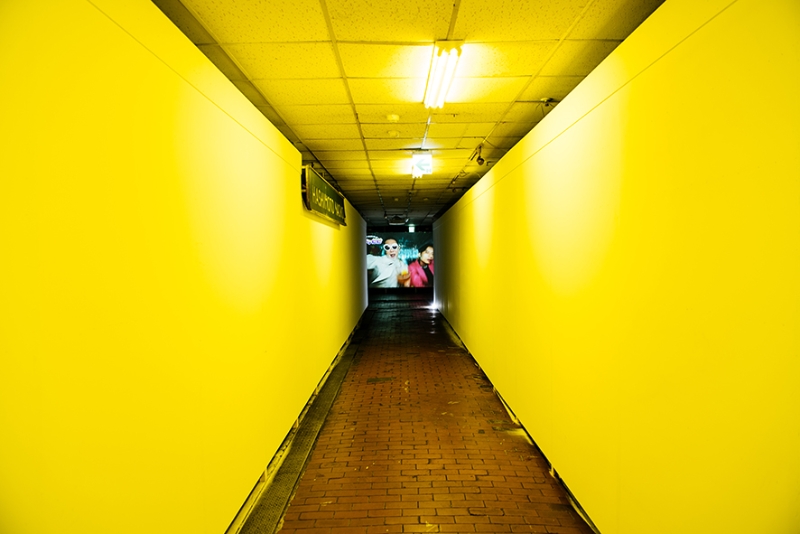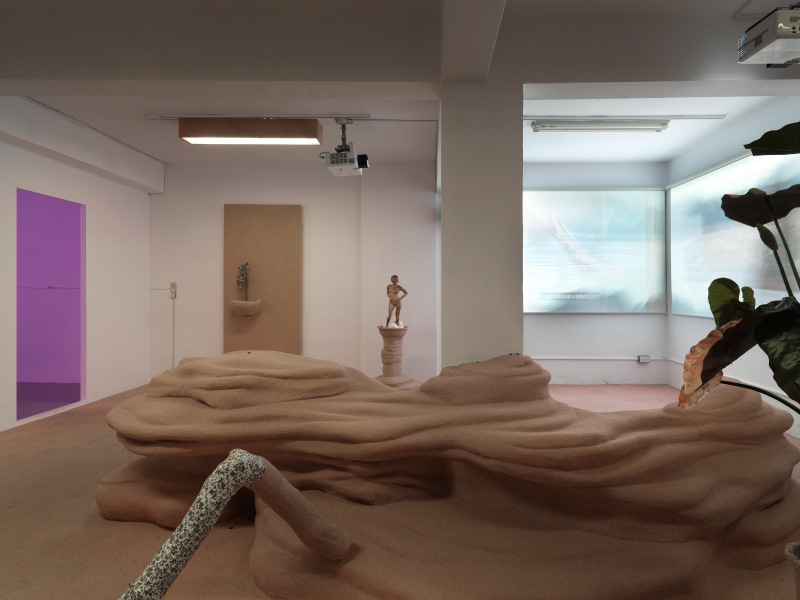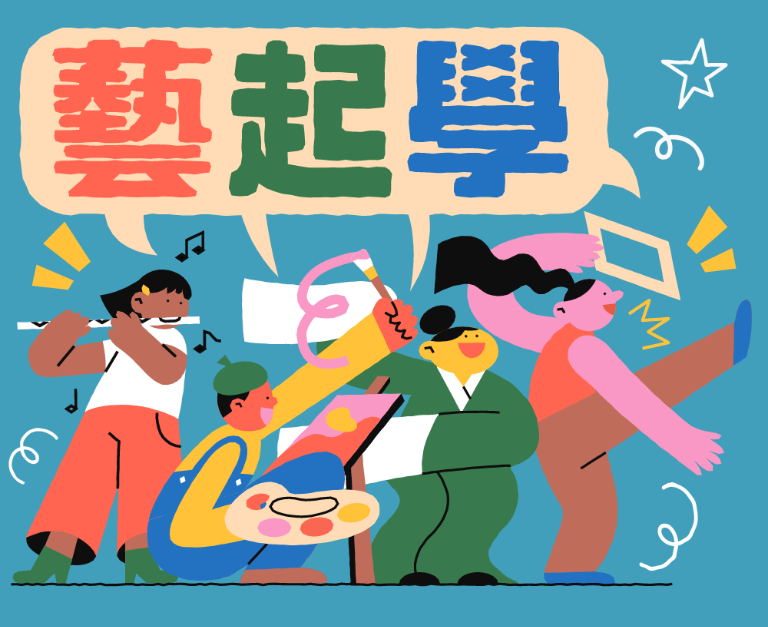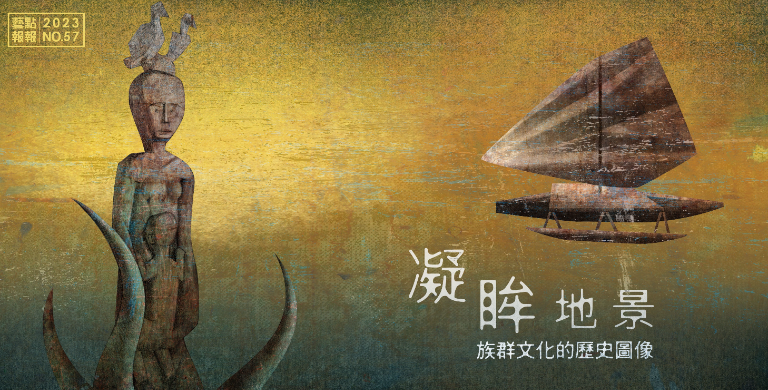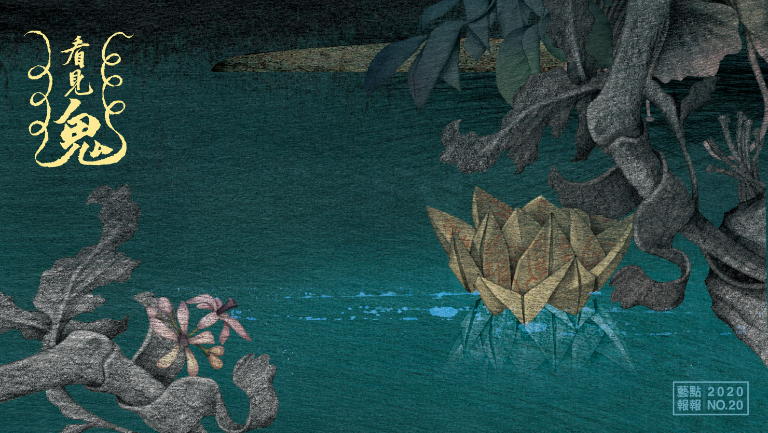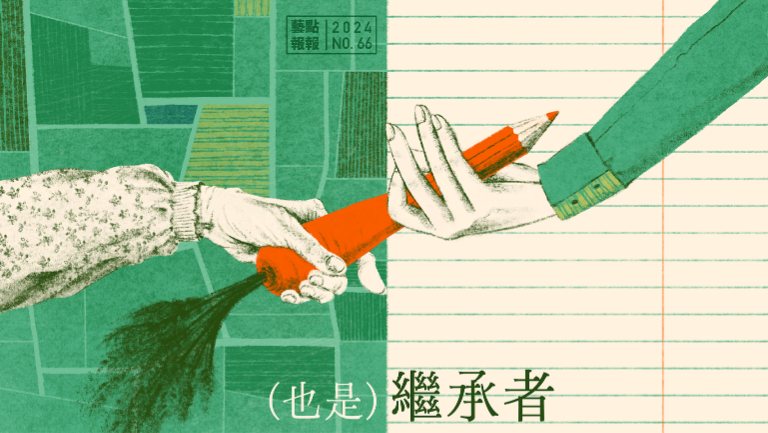Our everyday life is a comfort zone built on a long accumulation of habits, interpersonal network, spaces of our daily life, ways of moving, financial status, and cultural environment, whereas theatre and exhibition spaces (or similar ritualistic visits to specific places) offer a possibility for us to experience the unordinary.
The MRT Daqiaotou Station is located at one end of the historic Dadaocheng area and close to the hustling and bustling Yangsan Night Market, while between them is where DaQiao 1988 – An Immersive Outdoor Theatrical Performance Project by The Double Theatre quietly took place. The participants were requested to download an app on their phones and follow the guidance to certain locations for the stories of Daqiaotou to unfold. Through the headphones and the chosen scenes, the tour performance reconstructs what the community was like in 1988 in terms of its inhabitants/immigrants, industries, and local clans. The actors on-site remain silent like the ghosts haunting the area as they reenact the slices of the past events, either leaving mysterious traces or solving clues. At the end of the performance, the actors recite the transcribed interviews of the local in a plain and non-acting tone, shifting the spectators back to the present time with a gap of two decades and to what they began as, an outsider indeed.
Apart from being a major arterial road, Jianguo Expressway is more associated with the nearby Zhongshan Girls High School, Jianguo Brewery, Holiday Flower and Jade Market, and the nostalgic old-style Japanese bars by the citizens, while the space beneath the expressway takes up different functions, including markets, parking lots, taxi drivers’ club, gas stations, etc. Neither on the bridge nor under the bridge is the place for one to stay, but the curatorial team of OFF-SITE think otherwise to base their Bridge Hole project here. Following their previous residential research supported by the NCAF’s “Production Grants to Independent Curators in Visual Arts,” the curatorial team invited artists to present project-based creations (“all kinds of relational practices and art interventions”), aiming to stimulate possible or unexpected reactions to the existing spaces and communities under the bridge. The works include FAMEME’s earworm Rub a Dub Charlie's Angel in the Tub as a response to the taxi drivers’ club, the “pān-toh” feast (the Taiwanese traditional catering implicative of a sense of community) at the market’s Fude Temple with food provided by an old stall for both the artists and other vendors to dine together, the fictional urban development plan Jianba Secret Love which devises a luxurious future for the downtown area as an ironic contradiction with the leftover spaces here, and many other projects, taking place in its closing hours, transforming the market space and objects here into a different exhibition to create a mixed experience – aurally, visually, and physically evoking a bizarre and lingering sense of “intrinsic foreignness” (after all, it is a market, not an exhibition space!) as the audience walk around the place.
Unlike the abovementioned projects taking place in public spaces, Housing Things: Compilations, Gatherings, and Practices Shared in An Art Space curated by Tsou Ting, with the grant from the “Curator's Incubator Program @ Museum” project, went to the old military kindred village in Fuzhou, where a small group of local residents scatter to share the neighborhood with The 9 Art Practice Space and the NTUA Art Village. When it comes to the living spaces and the houses of the area, the artists are outsiders who temporarily own the spaces; when they face the spectators, the artists on the other hand become the host to welcome and treat the guests with their artworks, while the spectators in terms walk into the familiar but yet strange spaces (the residence now taking up the role as an exhibition medium), like a carpeted comfy living room/gallery, to experience the switch between the private sphere and public spaces as well as the hospitality without the real host.
Unlike the abovementioned projects taking place in public spaces, Housing Things: Compilations, Gatherings, and Practices Shared in An Art Space curated by Tsou Ting, with the grant from the “Curator's Incubator Program @ Museum” project, went to the old military kindred village in Fuzhou, where a small group of local residents scatter to share the neighborhood with The 9 Art Practice Space and the NTUA Art Village. When it comes to the living spaces and the houses of the area, the artists are outsiders who temporarily own the spaces; when they face the spectators, the artists on the other hand become the host to welcome and treat the guests with their artworks, while the spectators in terms walk into the familiar but yet strange spaces (the residence now taking up the role as an exhibition medium), like a carpeted comfy living room/gallery, to experience the switch between the private sphere and public spaces as well as the hospitality without the real host.
In Home away from home – an interdisciplinary multinational collaboration among Taiwan, Germany and Vietnam by Polymer DMT, supported by the NCAF’s The Rainbow Initiative, the spectators are divided into groups and led into the stage settings, which reconstruct different spaces of the life of the Vietnamese immigrant communities in Germany and Taiwan, such as the cramped bunk-bed accommodation for migrant factory workers in Taiwan, the long desks in Mandarin classroom, the restaurants and street juice stalls run by the Vietnamese immigrants in Germany, or the pure white space expressing warmth and love for baby delivering. Every setting has a “host,” taken up by the immigrants or migrant workers, whose real-life stories are shown in a short documentary or staged as live performance, while the spectators are thus allowed to face-to-face encounter a chapter of someone’s life (a real person rather than an actor or character) in an intimate but yet objective way. When they return to their seats, the visible scenes (as revealed voluntarily) what they have just experienced shift from the previous semidocumentary status to be gazed onstage again.
Sometimes, the immersive experience can be alienating through its implicative physical surroundings. Such a perspective drifting above the reality when one is “logging in” creates an ambiguous space as seen in the projects/programs on Chito APP, which continuously evoke the most private and unique memories corresponding to specific moments.
The increasingly popular Chito APP is an application designed by Jimmy Chang and has been widely used in audio and sound walks in recent years since Jimmy launched its first project Those Days When the Young People Gathered at the Legislative Yuan, followed by works by Actorship and Uncertain Studio as well as a series of programs under the 2022 Human Rights Arts Festival. Every work features a different experience and use of multimedia in accordance with its topic and narrative, while the script also activates different real-time physical senses, such as the assurance when someone is being alone but connected to the phone, the novelty when a familiar space is given different lens, or the scare when someone accidentally gets into a strange space by mistake.
Auntie & Uncle by Actorship, an art and creative project for older adults supported by the NCAF’s Inclusive Arts project grant, is one of the examples using Chito APP as its medium to base its performance structure on Ximending, where it took place. After taking performance classes and workshop, the senior amateur actors staged several scenes from the famous Shakespeare plays, and the video of the scenes would be unlocked in certain ways with clues from the place or the plot, such as: you had to choose the photos containing lions to unlock an episode of King Lear at Golden Lion Cantonese Restaurant, enter the corresponding fortune stick number to listen to the scheme of Lady Macbeth (now in charge of the Divine Empress Temple), go to Fengta Café for the story of Romeo and Juliet, or the old-established Lautianlu Braised Food for The Taming of The Shrew (now the Lady Boss of the shop), etc. The localized Shakespeare stories are like a friendly greeting to the audience. When the performance is over and the audience is not wearing the headphone anymore, they can feel a new connection with the place and keep it in their memory.
Meanwhile, Taiwan Historical Trails Sound Narrative Project – Road to Kavalan 1.0 by Uncertain Studio chose the northeastern Lungling Trail between Tsaoling and Shihcheng to develop their storyline, inviting participators to take the trail and imagine how the ancestors followed the same trail (a part of the longer one) to build new settlement in the wildland of Kavalan (the ancient name of Yilan). The ancient journey of the pioneers is not enacted by the information from the script, but how your body reacts to the spreading spider webs, the silver grass almost as tall as a person, the sometimes steep and narrow path and the tension caused by the unknown (the notice “the beehive has been removed” at the starting point of the trail seems to suggest the possible threat of bees along the way), and the videos unlocked at the assigned locations, meanwhile perfect for a short break, become the rewards for your hard work and physical effort. For today’s travelers/spectators who no longer bear the burden of new settlement, the trail itself as well as its landscape and soundscape clearly make a gift derived from the project.
Open the google map and enter a location, you can easily find the ways as a pedestrian and know the space through MRT stations, roads, streets, or bus stops. We pass by the leftover spaces under the bridge, the old streets separated by traffic lanes, or the neighborhood outside the tourist map, seeing these “spaces” as spectacles in our gaze, whereas they are also “places” where other people live their lives. With all these different topics explored in different formats, it is still impossible to know whether we know more about someone, some ethnic group, some space, some place, or some issue – so let us keep trying and keep logging in!
*Translator: Siraya Pai

